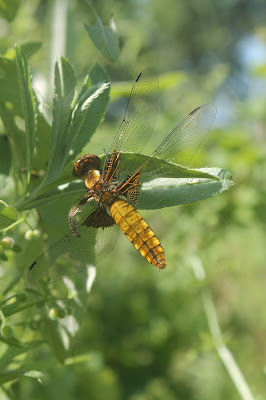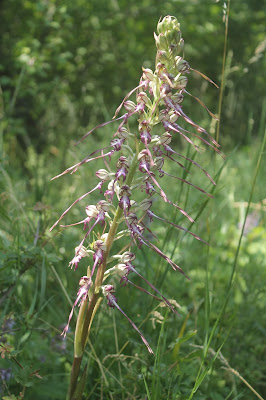The summer has arrived and it's been a hot four weeks since the last update, during which we've been busy at the project making a new forest garden during our Design and Build Course , working on designs for other people's forest gardens, and tending the existing gardens. We've said goodbye to Ronan who has been with us for the last 3 months, thanks x 1000 Ronan for your help in the gardens, they are looking/feeling better for it :) We also said goodbye to Lily and Maria,and have welcomed Shahara and Christiana and Tobi to the team.
So here's a what we've been up to last few weeks.
 |
| Plants, Seeds, eBooks, Consultancy, Bulk Fruit and Nut Tree Orders for Permaculture, Polyculture, Forest Gardens and Regenerative Landscapes. |
Ekpyrosis - A new Forest Garden
The last week of June we welcomed participants from all over the world to take part in our Design and Build a Forest Garden Course, an intensive practical course where we go through the whole design process and build a garden within 3 days. Being the summer we did not plant the garden but we did undertake a soil survey, topographical survey, establish the irrigation channels, pathways and beds to be ready for planting in the autumn or spring.
The purpose of this garden is as follows
Primary Purpose - to produce fruits and perennial vegetables with all fertility to support growth produced within the garden (beyond initial set up inputs.)
Secondary Purpose - to provide a range of habitat to support wildlife.
Our goal with the design is to encourage growth of existing biodiversity as much as possible and provide new habitat that enhances biodiversity. We also want to utilise the slope of the land and existing water source to irrigate the garden via a mountain stream.
Location: Bulgaria, Shipka
Climate: Temperate
Köppen Climate Classification - Dfc borderline Cfb
USDA Hardiness Zone: 5b - 7a
Latitude: 42°
Elevation: 574 m
Average Annual Rainfall: 588.5 mm
Prevailing Wind: NW & NE
Garden Name: Ekpyrosis
Garden Area: 652m2
The water enters the garden from the north and flows into the channels that flanked by two 50 cm wide beds with a 50 cm pathway between each channel and bed layout as shown in the below diagram.

In the middle of the bed layout is a mini wetland/marsh habitat that is basically a rectangular area that we dug out, lined with an impermeable membrane, back filled with stones and sand and planted with a number of different emergent aquatic plants. I'm not sure how effective this will be, but the aim is to provide a micro habitat for the garden that will attract and house frogs, dragonflies and other aquatic organisms. I'll be posting some photos next week of how we made the wetland along with some photos of how it's doing.
This illustration lists the species that will populate the garden
You can find profiles of all the plants used in this design (apart from the aquatic plants) in the links below.
Tetradium danielii - Korean Bee Tree
Rhus typhina - Stag's horn sumach
Rubus idaeus cv. - Raspberry
Ginkgo biloba - Maidenhair Tree
Elaeagnus umbellata - Autumn Olive
Spartium junceum - Broom
Allium cepa proliferum - Tree Onion
Asparagus officinalis - Asparagus
Symphytum x uplandicum - Comfrey
Miscanthus x giganteus - Giant Miscanthus
Here's a projection of how the garden will mature over time.
If you are interested in Creating a Forest Garden you can find more information in our previous blog here join one of our webinars here or come and experience it first hand during our next Design and Build a Forest Garden course this October
Wildlife in the Gardens
Great to see Lizards on slug patrol around the nursery. This is a juvenile Lacerta viridis. Thanks Danka Dragomir for the I.D.
This beautiful dragon fly was photographed by Maria Cruz
Lily spotted this amazing Orchid on the way back from the garden. It's the first time I've seen this plant and I believe it to be Himantoglossum caprinum, (thanks Misha for the I.D). It's conservation status is vulnerable so it's great to see it growing locally.
Ataraxia - The Polyculture Trial Garden
We planted some late sweetcorn in one of the raised beds we prepared last year making small nests for the seeds through the straw mulch and sowing 2 - 3 seeds per nest. The plants are growing well.
Ronan digging the 30 cm wide 30 cm deep input channel for the new forest garden.
It's great to see Sideritis scardica - Ironwort flowering in the gardens. The plant is endemic to the Balkan Peninsula, where it is found at high altitudes in rocky montane areas. This herb is under intense collection pressure from the wild, with increasing demand for its medicinal value. The plants has historically been a valuable medicinal plant. The name 'Sideritis' derives from the Greek word “sideros” meaning iron; in the ancient past, Sideritis was a generic reference for plants used to heal wounds caused by iron weapons during battles. It is also commonly used to make an excellent 'mountain tea (Mursalski Tea) and is rich in flavanoids, terpenes and essential oils, iridoids, coumarins, lignans and sterols.
I've started to plant quite a lot of Hemerocallis fulva - Orange Daylily around the edges of our raised beds. These plants are very easy to propagate large numbers of via root divisions and establish relatively quickly to form large clumps that produce edible and beautiful flowers in early summer.
As you can see in the below illustration of a polyculture we have planted in one of the swales in Ataraxia, Hemerocallis fulva - Orange Daylily is used as fringe planting. I'm hoping over time, as the plants mature into clumps, they will prevent the encroachment of grass from the grassed pathways that wrap around the perimeter of the bed.
Over in Aponia, the market garden, we continue to experiment with annual vegetable polycultures. This year we been trying out Buckwheat in a few areas in the vegetable garden, mainly to assess it's green manure properties and attractiveness to wildlife. Sophie sowed a patch in mid March which was a little too early and resulted in approx 20% germination rates and I sowed another patch in Mid may with some corn sown in rows at the same time. The germination rates were excellent but it seems the combination is not a good one as you can see in the below photo, the buckwheat has shot up and is starting to smother the corn. We'll see how the corn responds.
Regenerative Landscape Design - Online Interactive Course
Want to learn how to design, build and manage regenerative landscapes? Join us for our Regenerative Landscape Design - Online Interactive Course from May 1st to Sep 13th, 2023.
We're super excited about running the course and look forward to providing you with the confidence, inspiration, and opportunity to design, build and manage regenerative landscapes, gardens, and farms that produce food and other resources for humans while enhancing biodiversity.

Regenerative Landscape Design Online Course
You can find out all about the course here and right now we have a 20% discount on the full enrollment fees. Just use the promo code RLD2023 in the section of the registration form to receive your discount.
We are looking forward to providing you with this unique online learning experience - as far as we know, the very first of its kind. If you are thinking of reasons why you should do this course and whether this course is suitable for you, take a look here where we lay it all out. Looking forward to it!
We're super excited about running the course and look forward to providing you with the confidence, inspiration, and opportunity to design, build and manage regenerative landscapes, gardens, and farms that produce food and other resources for humans while enhancing biodiversity.
 |
| Regenerative Landscape Design Online Course |
You can find out all about the course here and right now we have a 20% discount on the full enrollment fees. Just use the promo code RLD2023 in the section of the registration form to receive your discount.
We are looking forward to providing you with this unique online learning experience - as far as we know, the very first of its kind. If you are thinking of reasons why you should do this course and whether this course is suitable for you, take a look here where we lay it all out. Looking forward to it!
--------------------------------------------------------------------------------------------------------------------------
Support Our Project
If you appreciate the work we are doing you can show your support in several ways.
- Make a purchase of plants or seeds from our Bionursery or Online Store
- Consider joining us for one of our Courses or Online Courses
- Comment, like, and share our content on social media.
- Donate directly via PayPal to balkanecologyproject@gmail.com
If you appreciate the work we are doing you can show your support in several ways.
- Make a purchase of plants or seeds from our Bionursery or Online Store
- Consider joining us for one of our Courses or Online Courses
- Comment, like, and share our content on social media.
- Donate directly via PayPal to balkanecologyproject@gmail.com
 |
| You can also register for our online training, services, and products directly here. |
















Hope the corn look good at ataraxia 🙂. Take care of you and your family. Thank you
ReplyDeleteHi Ronan, the corn is looking great I'll post some photos next week. Thanks again and good luck with the search for your land.
ReplyDelete